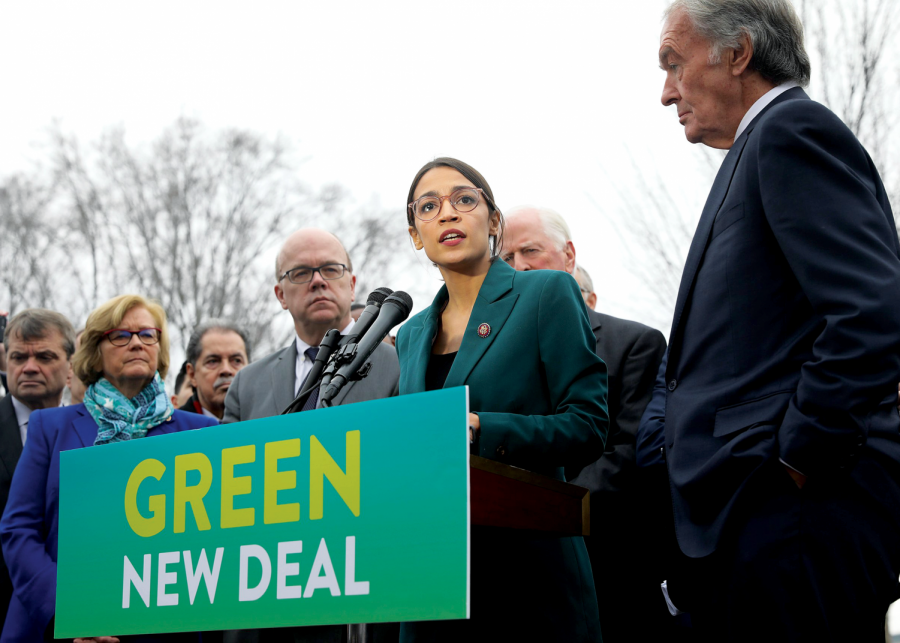Climate changes under AOC
Photo by Senate Democrats obtained through Creative Commons
Representative Alexandria Ocasio-Cortez and Senator Ed Markey speak at the Capital Building during February 2019.
May 10, 2019
The year is 2050. Some see a 100 percent renewable energy America, with zero net emissions, an environmentalist’s dream. Others see an economy in ruin, with a nation even deeper in debt and America’s essential industries destroyed. These are the potential consequences of a Green New Deal.
The Green New Deal, brought forward by Representative Alexandria Ocasio-Cortez and Senator Ed Markey, is one of the most controversial policies put forth by Congress. It proposes a 10-year national mobilization to fight climate change through “upgrading all existing buildings, overhauling transportation systems, and working with farmers to eliminate greenhouse gas emissions” among other things, according to NPR.
Progressives see the deal as a necessary solution, while Republicans criticize it as dangerous and extreme, according to ABC News. Despite legitimate criticism of the bill’s overambition, it is still the only environmental policy that addresses climate change to the extreme degree that is necessary.
While center-leaning Democrats like Senator Dianne Feinstein and House Speaker Nancy Pelosi immediately shot down the resolution, “moderate” measures taken to address climate change often do more harm than good. Carbon taxes, a policy championed by many Democrats, often led to little to no reduction in carbon emissions, according to The Los Angeles Times.
Along with this, scientists agree that climate policy needs to extend far beyond taxation. A report by the Intergovernmental Panel on Climate Change (IPCC) stated that if the planet increases a total of 1.5 degrees Celsius by 2030, future warming will increase food shortages, droughts and wildfires for hundreds of millions of people. The IPCC conclude that governments must take “rapid, far reaching and unprecedented changes to all aspects of society” to avoid these harmful effects, according to CNN. The Green New Deal is the only legislation that meets these criteria.
Despite its flaws, the Green New Deal is a necessary step in addressing climate change. While a better resolution may soon replace it, the program suggests drastic measures that actually align with what top climate scientists argue the country needs.
While skeptics question why so much change is necessary, they fail to realize that such an urgent situation calls for urgent and far reaching measures. Pragmatists may question how we will pay for it, and the truth is that we will have to pay for our damage done to the climate in one way or another. Now we will pay in dollars, but if we fail to prevent it, the cost will become human.




